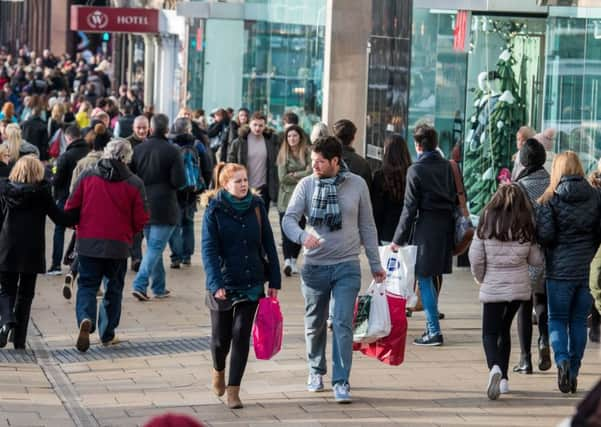Retail leader warns over tough year for Scottish stores
This article contains affiliate links. We may earn a small commission on items purchased through this article, but that does not affect our editorial judgement.


In his New Year message, Scottish Retail Consortium (SRC) director David Lonsdale said that although the end of 2016 had seen modest signs of improvement in retail sales north of the Border, much of the data on footfall and shop vacancies during the year had made for “sober reading”.
Lonsdale called for a more coherent approach towards policy making in the year ahead to help the sector, given its importance to Scotland’s economy.
Advertisement
Hide AdAdvertisement
Hide AdHe said although there has “rarely been a better time to be a shopper” thanks to falling prices and the greater choice that technological developments had enabled, that also posed significant difficulties for retailers.


Those challenges will be compounded in the months ahead by rising inflation and hikes in council taxes which are likely to put a strain on disposable incomes.
“In many respects our economy lives or dies by what happens to consumer spending. That’s why policy makers should be concerned about the formidable challenges for Scottish retail in the year ahead,” stressed Lonsdale.
At the same time as consumer spending power is squeezed, retailers are facing cost pressures due to factors including the fall in sterling’s value, which is leading to higher import costs.


Lonsdale said retailers were also continuing to grapple with a “hotchpotch of government-imposed cost pressures”.
“This is set to continue into early 2017 when employers of scale start forking out for the Apprenticeship Levy. This reinforces the need for government at every level to work more effectively with the retail industry to help it keep down the cost of living for consumers and to help it thrive and prosper. A more coherent approach towards policy making in the year ahead is certainly required.”
Lonsdale said that with half of VAT receipts soon to be assigned to Holyrood, MSPs will have an even greater direct stake in supporting the retail industry.
With the culmination of the Barclay Review of Scotland’s business rates system concluding in 2017, Lonsdale said it was important for a shake-up of business rates for the decade ahead to substantially lower the tax burden.
Advertisement
Hide AdAdvertisement
Hide Ad“This would increase retailers’ confidence about investing in new and refurbished shop premises, create jobs and help revive our high streets and town centres,” he said.
Latest figures from the SRC showed total retail sales in Scotland recorded a third successive month of real-terms positive growth in November, albeit at a pace less marked than in October.
Although total Scottish sales decreased by 1.5 per cent, once adjusted for deflation they increased by 0.2 per cent in real terms.
